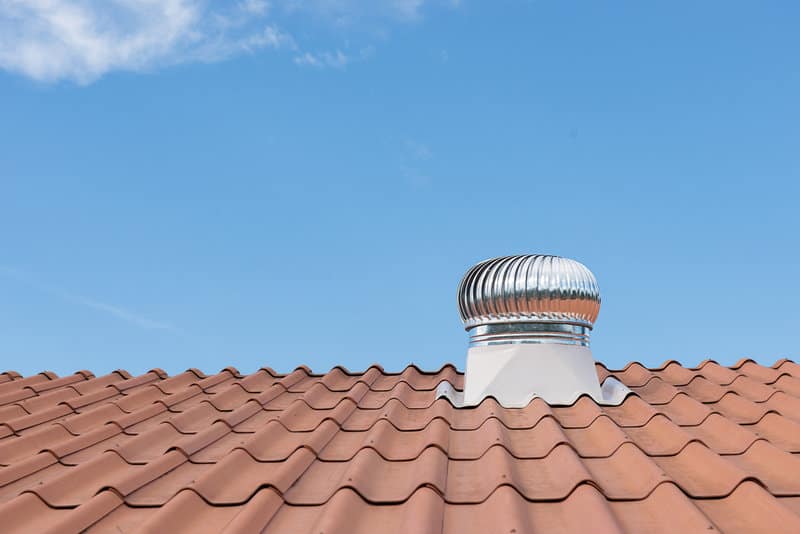
For some homeowners, the idea of attic ventilation sounds strange. You go the extra mile to insulate your attic but then you install vents to let air in?
In reality, what you need is a balance between the two. Even if you don’t use your attic, ventilation and insulation are key to make your home energy-efficient. The good news is that attic ventilation isn’t an expensive project. Here’s what you need to know:
How to Know if You Need Better Attic Ventilation
The most obvious sign that you need better attic ventilation is that you don’t have any vents in the first place. Go into your attic and take a look. You should have vents in the roof and in your soffits as well. If either piece is missing, your attic needs some work.
There are other signs that your attic needs more ventilation as well. If your attic smells like mold or mildew, it tells you that there isn’t enough ventilation and also that you have a water leak. The same is true if you can actually see mold in the attic.
Your attic could be giving you more subtle clues, though. The next time you have a sunny, warm day, touch the ceiling of the top floor in your home. If it’s warm, it means your attic is acting as an incubator. You can imagine what that does to your air conditioning bills.
If you live in an area that gets snow and ice in the winter, look for ridges of ice around the edges of your roof. This happens when a warm, non-ventilated attic melts the snow. The water runs to the edges of your roof and freezes because the eaves are cold. That can hold water and snow on your roof which could lead to serious problems
Start By Fixing Any Sources of Water Leakage
Before we talk about attic ventilation, there’s another point we need to make. If your attic smells like mold or mildew, you need to fix the water leak before you do anything. In many cases, it means fixing a leaky roof. Water damage will cause issues with even the best ventilation, so this is priority #1.
How to Install Attic Ventilation
When your roof is leak-proof, it’s time to get that attic ventilation in place. Some handy homeowners can do this process themselves. If that doesn’t sound like you, we’ll go into more details later about hiring a professional. If you think you’re up to the task, though, here’s your guide:
Map It Out
Planning is always the first step. Head up to your attic and measure the area. In general, you need one square foot of ventilation for every 150 square feet of attic space.
About half of your ventilation should come from roof vents while the other half comes from soffit vents. The roof vents should be about 18 inches from the peak of the roof.
Buy Your Supplies
There are plenty of types of vents you can choose for your attic ventilation. It may be a matter of browsing your local home improvement store and checking out their selection.
In addition to the vents, you’ll need roofing nails for the roof vents and galvanized screws for the soffit vents. You also need a utility knife, a dust mask, and roofing cement.
As far as tools go, you can do the entire job with a jigsaw. Make sure you have the ladders and safety equipment to reach all the areas you need to access as well.
Cut the Roof Vents
For the roof vents, start by marking their placement from inside the attic. This lets you avoid rafters. When you measure out the right place for each vent, drive a nail into the roof so it sticks out and marks the place.
Head onto the roof and use the utility knife to cut the shingles. You want to cut to be about half an inch larger than the vent’s opening. when the shingles are gone, use a jigsaw to cut the hole through to the attic.
Place and Secure the Roof Vents
You’ll apply roofing cement to the bottom edge of the hole and a few inches of the sides of the hole. With ease, slide the vent into place. Secure it with roofing nails and with roofing cement around the perimeter of the vent.
Cut and Install the Soffit Vents
Soffit vents take fewer steps to install than roof vents. Head outside to your soffits and use the jigsaw to cut the holes. Each hole should be about an inch smaller than the vent to leave space to screw in the vent.
Place a vent into each hole and secure it with the galvanized screws. Make sure the vent’s fans point toward your house.
When to Hire a Professional
While the process of installing attic ventilation can be simple, that’s not the case for everyone. For some homeowners, it’s better to hire a roofing professional instead.
That may be the case if you don’t already have the jigsaw and the ladders you need to do the job. Renting these items could be more expensive than hiring someone to do the entire job.
Safety is of the utmost importance. If you don’t feel comfortable that you can stay safe while you work on the roof, it’s better to hire a professional. In the same way, if you aren’t confident that you can complete the job without causing more damage to your house, a professional installation might be the way to go.
Ventilating Your Attic for a Healthier Home
Attic ventilation can keep your home mold-free while limiting your energy bills. It’s an important step that not all homeowners know about.
If you choose to do the job yourself, use caution and read the instructions on all vents and other materials first. If you choose to hire a professional, make sure you hire a roofing expert rather than a general handyman. These professionals have the expertise and the tools to get the job done well.
For more tips on maintaining your roof and your home check our roofing blog.

